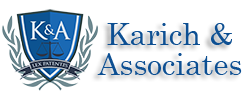Razor Group to Buy and Scale Amazon merchants
Berlin’s Razor Group raises $400M to buy and scale Amazon Marketplace merchants
In August 2020 Razor Group began an Amazon Aggregator Business (AAB) with a massive investment of $400 million, just one of a stampede of businesses trying to profit off of this fast-growing market. Wall Street investors are currently chomping at the bit to fund e-commerce empires such as Razor Group that consolidate independent third-party merchants on Amazon.
According to one estimate, there are around 5 million third-party sellers on Amazon today, and their ranks are growing exponentially, with over one million sellers joining the platform in 2020 alone. In the past, Thrasio estimated that there were probably 50,000 companies that sell on Amazon through FBA and make $1 million or more per year.
What are AABs?
AABs buy third-party retail businesses from Amazon, in hopes of producing profit for investors. They usually make an initial down-payment to Amazon, with the intention of paying the remaining debt with profit margins from the newly-acquired business. Razor offered $25 million in the form of equity to grow the business, with $375 million in debt to make the acquisition. CEO Tushar Ahluwalia said to that he believes Razor Group will cross $480 million in sales in the next 12 to 15 months.
Razor’s target businesses typically already pull in several million annually, but this is not always required for AABs. Existing AABs include Thrasio, Perch, HeyDay, and many more.
HeyDay CEO Sebastial Rymarz said in a press release,
"We're in the early days of a tectonic shift toward marketplace commerce. Just as the last decade saw the rise of Warby Parker, Dollar Shave Club and other digitally native vertical brands, this decade will see the rise of a new generation of marketplace-native brands… Although the shift has been a boon to entrepreneurs around the globe, most still lack the capital, tools and resources to realize their full potential."
What are AABs looking for?
Obviously, investors are looking for high-quality, profitable, and trustworthy brands to acquire. Some criteria might include Amazon Brand Registry (ABR), merchants Fulfilled by Amazon (FBA), an average minimum of $200k annual profit, high number of SKUs, merchants with a cornered niche in the market, and projected growth.
Investors don’t focus on specific categories the way a Procter & Gamble does, but may instead invest in a variety of categories. Perch, for example, sells maternity belts, auto upholstery tools, peppermint-based athlete’s foot cures, and virtual-reality headsets.
What can I expect after I sell my business?
Once an AAB purchases a business, they will begin attempting to optimize profit margins with funding and brand power. For example, they may wish to expand inventory to other countries, and start negotiation with manufacturers and suppliers for better deals. Many AABs promise a 3-4x increase in annual profit for acquired retailers.
Conclusion
AABs are being flooded with investors hoping to profit off of this new wave of marketplace commerce. If you are an Amazon retailer and would like to investigate this opportunity, many AABs have simple contact forms directly on their website. Razor Group’s is conveniently located right on the front page of the site here.
To learn more, visit :
https://digitalexits.com/amazon-fba-business-worth-want-sell/
https://techcrunch.com/2021/04/01/thrasio-raises-100m-for-its-amazon-roll-up-play-appoints-retail-cfo-heavyweight-for-its-next-steps/

